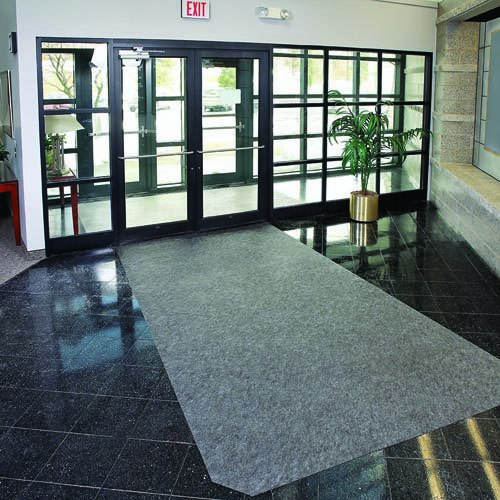Making floors safer when budgets are tight
How can I improve floor safety with little to no budget?

Responding is Karen Hamel, regulatory compliance specialist, trainer and technical writer, New Pig Corp., Tipton, PA.
Begin with a near-zero cost solution: Perform a thorough walkthrough of the entire facility to identify walking-working surface hazards. This can take some time and, of course, time is money in the business world. But for most safety professionals, hazard assessments are part of the job, so that investment will already have been made.
As hazards are being assessed, pay special attention to doorways and entrances/exits. Changes in walking surfaces are common near doors because this is where flooring sometimes changes from one type of surface to another, making these areas prime locations for slips, trips and falls. Where the changes are sudden (e.g., going from a carpeted area to polished vinyl composite tile), consider transition matting to make the change less drastic.
When an identified floor safety hazard cannot be fixed immediately, guard it until it can be fixed. This can be done by denying access to the area, putting inexpensive barricades (cones) around it, posting signage or surrounding the hazardous area with barricade tape. This helps to prevent injuries until repairs or replacement costs can be added to the budget.
Reviewing floor cleaning schedules and methods is another low-cost solution that can have multiple benefits. It may seem counterintuitive, but floor cleaning can cause slippery walking surfaces if the wrong type of cleaner, the wrong cleaning method or the incorrect volume of cleaning solution is used. More isn’t always better. Review the instructions for all floor cleaning products to ensure the correct product, the right amount of cleaner and the right water temperature are being used for the type of floor being cleaned. Also, check the tools being used to clean floors. Unclean mops and dirty water spread dirt and don’t clean the floor – potentially making the floor condition worse.
Finally, plan for the weather. It should come as no surprise that the risk of incidents goes up when rain, snow or ice is present. Plans should include schedules and assignments for keeping outdoor areas such as parking lots and sidewalks clear of snow, ice and mud. Stocking items such as shovels, floor-level fans, absorbent matting, ice melt and brooms in areas where they’ll be needed will make it easier for everyone to access when they’re needed.
Over time, it may become necessary to replace a floor or resurface areas of the facility. But, quite often, small, inexpensive changes are all that are needed to make a big difference in floor safety.
Editor's note: This article represents the independent views of the author and should not be construed as a National Safety Council endorsement.
Post a comment to this article
Safety+Health welcomes comments that promote respectful dialogue. Please stay on topic. Comments that contain personal attacks, profanity or abusive language – or those aggressively promoting products or services – will be removed. We reserve the right to determine which comments violate our comment policy. (Anonymous comments are welcome; merely skip the “name” field in the comment box. An email address is required but will not be included with your comment.)

